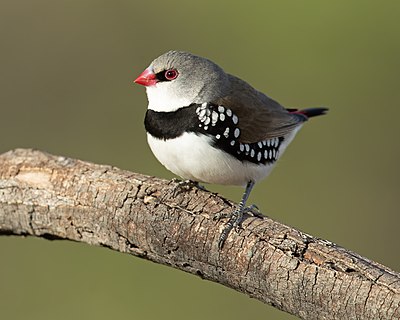From today's featured article
Barkhale Camp is a causewayed enclosure, a Neolithic archaeological site on Bignor Hill, on the South Downs of West Sussex, England. English causewayed enclosures, built from around 3700 BC until at least 3500 BC, are enclosed with ditches interrupted by gaps, or causeways. They may have been settlements, meeting places, or ritual sites. Barkhale Camp was identified by John Ryle in 1929 and surveyed the following year by E. Cecil Curwen, who listed it as a possible Neolithic site. A small trench was dug in 1930 by Ryle, and more extensive excavation was undertaken by Veronica Seton-Williams between 1958 and 1961, which found a characteristically Neolithic assemblage of flints. Peter Leach conducted another excavation in 1978, examining several mounds and attempting to find the line of the ditch and bank along the southern boundary. No material suitable for radiocarbon dating was recovered, but Leach suggested that the site was constructed in the earlier Neolithic, between 4000 BC and 3300 BC. (Full article...)
Did you know ...
- ... that after the Italian soprano Fausta Labia (pictured) worked at the Royal Swedish Opera, she appeared as Mascagni's Iris at La Fenice in Venice and as Wagner's Sieglinde at La Scala in Milan?
- ... that Watchdog created a fact-checking app within 36 hours of its founding?
- ... that Gentner Drummond flew in the first combat mission of Operation Desert Storm?
- ... that a hut on New Zealand's Copland Track had to be moved after being hit by a mudslide just 13 weeks after opening?
- ... that Ontario Hockey Association president Brent Ladds once agreed to let a player reduce his suspension by serving as a referee?
- ... that South Carolina's Buford High School was named in 1925 after Continental Army Colonel Abraham Buford, who fought at a nearby battlefield in 1780?
- ... that the Treaty of Breda did not establish the borders of Acadia, so Hector d'Andigné de Grandfontaine established them at the Saint George River?
- ... that Chicecream's ice cream flavours include aged cheese and bird's nests?
In the news
- In cycling, Jonas Vingegaard (pictured) wins the Tour de France.
- The World Health Organization declares the monkeypox outbreak a public health emergency of international concern.
- The Chinese paddlefish, one of the world's largest freshwater fish species, is declared extinct by the International Union for Conservation of Nature.
- Amid protests over the economic crisis, Ranil Wickremesinghe is elected President of Sri Lanka by the parliament.
On this day
July 26: Independence Day in Liberia (1847)

- 1759 – French and Indian War: Rather than defend Fort Carillon, near present-day Ticonderoga, New York, from approaching British forces, French brigadier general François-Charles de Bourlamaque withdrew his troops and attempted to blow up the fort.
- 1936 – The Canadian National Vimy Memorial (unveiling pictured), dedicated to the Canadian Expeditionary Force members killed in the First World War, was unveiled in Pas-de-Calais, France.
- 1968 – After coming second to Nguyễn Văn Thiệu in a rigged presidential election, Trương Đình Dzu was jailed by a South Vietnamese military court for illicit currency transactions.
- 2016 – A former employee carried out a mass stabbing at a care home for disabled people in Sagamihara, Japan, killing 19 people and wounding 26 others.
- George Bernard Shaw (b. 1856)
- Asif Ali Zardari (b. 1955)
- Kate Beckinsale (b. 1973)
Today's featured picture

|
The diamond firetail (Stagonopleura guttata) is a species of estrildid finch that is endemic to Australia. The species generally inhabits drier forests and grassy woodlands west of the Great Dividing Range, and can be distinguished by a black band on a white breast. Their flanks are black with white spots with a scarlet rump and a black tail. This diamond firetail was photographed in Glen Alice, New South Wales. Photograph credit: John Harrison
Recently featured:
|
Other areas of Wikipedia
- Community portal – The central hub for editors, with resources, links, tasks, and announcements.
- Village pump – Forum for discussions about Wikipedia itself, including policies and technical issues.
- Site news – Sources of news about Wikipedia and the broader Wikimedia movement.
- Teahouse – Ask basic questions about using or editing Wikipedia.
- Help desk – Ask questions about using or editing Wikipedia.
- Reference desk – Ask research questions about encyclopedic topics.
- Content portals – A unique way to navigate the encyclopedia.
Wikipedia's sister projects
Wikipedia is written by volunteer editors and hosted by the Wikimedia Foundation, a non-profit organization that also hosts a range of other volunteer projects:
-
Commons
Free media repository -
MediaWiki
Wiki software development -
Meta-Wiki
Wikimedia project coordination -
Wikibooks
Free textbooks and manuals -
Wikidata
Free knowledge base -
Wikinews
Free-content news -
Wikiquote
Collection of quotations -
Wikisource
Free-content library -
Wikispecies
Directory of species -
Wikiversity
Free learning tools -
Wikivoyage
Free travel guide -
Wiktionary
Dictionary and thesaurus
Wikipedia languages
This Wikipedia is written in English. Many other Wikipedias are available; some of the largest are listed below.
-
1,000,000+ articles
-
250,000+ articles
-
50,000+ articles


